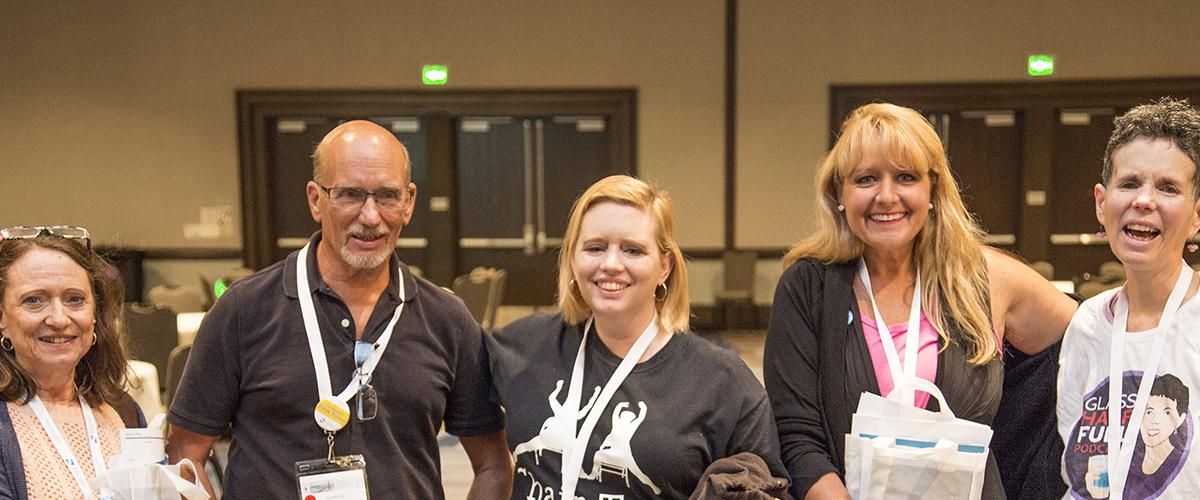Genetics and Epigenetics of CDM
Congenital myotonic dystrophy (CDM) is typically maternally inherited and associated with CTG expansions of greater than 1000 repeats. A previous report by Drs. Karen Sermon and Christopher E. Pearson (Barbé et al., 2017) suggested that repeat length alone was not sufficient to trigger CDM, but that co-occurrence of specific epigenetic changes upstream of the DMPK locus, CpG hypermethylation, was an essential factor in both the phenotypic severity and maternal inheritance pattern characteristic of CDM (see http://www.myotonic.org/inheritance-cdm). Conceptually, it may not be appropriate to think of CDM as ‘severe DM1,’ but rather as a mechanistically distinct disease also localized to the DMPK locus. Achieving clarity on genetic and epigenetic mechanisms in CDM should inform testable hypotheses as to downstream events responsible for the CDM phenotype and putative targets for therapy development.
Pathogenic Mechanisms Underlying CDM
Dr. Masayuki Nakamori (Osaka University Graduate School of Medicine) and colleagues recently published studies of downstream signaling pathways in CDM, focusing on molecular events that may contribute to the skeletal muscle immaturity seen in CDM but not DM1 or DM2. Through study of CDM patient skeletal muscle samples, the group established a correlation between expanded CUG tracts, methylation of CpG islands upstream of the DMPK locus, and skeletal muscle immaturity. The aberrant methylation, in turn, correlated with dysregulation of transcription in both sense and antisense directions and concomitant increase in expanded CUG repeat transcript toxicity. The team linked RNA toxicity to PKR activation and increased ER stress response, NF-κB activation and chronic activation of IL-6/STAT3 myokine signaling that promotes myocyte proliferation/delays differentiation. The authors propose an integrated disease model and suggest that over-activation of IL-6 myokine counters it’s positive role in muscle development and instead is responsible for the profound failure of skeletal muscle maturation and, over time, muscle atrophy in CDM.
Some components of the signaling pathway described by the research team appear to be restricted to CDM. While activation of ER stress response was also observed in DM1, the IL-6 myokine signaling activation found in CDM muscle samples is not detected in skeletal muscles of either DM1 patients or HSA-LR mice. The authors note that a mechanistic linkage between very large expanded CUG repeats in DMPK and CpG methylation status is not yet resolved. Given the potential importance of hypermethylation at sites upstream of DMPK in differentiating CDM from DM1, and in the maternal inheritance pattern of CDM, understanding how repeats > 1000 impact CpG methylation remains an important question.
Implications for CDM
Elucidation of pathogenic mechanisms in CDM, particularly downstream signaling pathways essential to disease onset and progression, increases understanding of the disease as well as provides novel targets for therapy development. Maturational failure of skeletal muscle represents a key contributor to the burden of disease in CDM. The downstream pathways described by this research team appear to include tractable targets for therapeutic intervention, such as NF-κB, STAT and IL-6, which represent drug targets under investigation for other disease classes, including oncology and inflammatory disorders, raising prospects of repurposing drugs already under development for DM.
Reference:
Aberrant Myokine Signaling in Congenital Myotonic Dystrophy.
Nakamori M, Hamanaka K, Thomas JD, Wang ET, Hayashi YK, Takahashi MP, Swanson MS, Nishino I, Mochizuki H.
Cell Rep. 2017 Oct 31;21(5):1240-1252. doi: 10.1016/j.celrep.2017.10.018.

